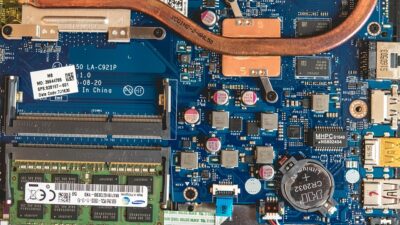In a landmark move that has sent ripples across the tech world, Nvidia has announced a staggering $40 billion acquisition, marking one of the most consequential deals in the semiconductor industry. This acquisition, while yet to be finalized, could reshape the landscape of chip manufacturing and artificial intelligence (AI) development.
Understanding the Acquisition
Nvidia, a leader in graphics processing units (GPUs) known for its dominance in gaming and AI, has been on a purchasing spree in recent years. The company aims to enhance its capabilities, expand its portfolio, and fortify its position in high-demand sectors like artificial intelligence, autonomous vehicles, and gaming.
The specifics of the acquisition involve acquiring a key player whose intellectual property and technological expertise are seen as essential for next-generation chip development. While Nvidia has not officially named the target, industry speculations suggest it could be a company that specializes in AI chips or related technologies.
The Implications for the Chip Industry
1. Consolidation and Competition
One of the most significant implications of this deal is the trend towards consolidation in the chip industry. As larger companies seek to control more of the technological supply chain, smaller firms may find it challenging to compete. This acquisition could herald a new era of monopolistic practices, leading to fewer players in the market who can innovate and invest in new technologies.
2. AI Innovations
The acquisition is expected to bolster Nvidia’s efforts in the AI space, a sector that has witnessed explosive growth. Nvidia has already established itself as a leader in AI processing, largely due to its powerful GPUs. By integrating new technologies from the acquired company, Nvidia could accelerate advancements in machine learning, deep learning, and neural networks. This could further position them as a preferred supplier for companies and research institutions leveraging AI.
3. Supply Chain Resilience
Recent global disruptions have highlighted the vulnerabilities within semiconductor supply chains. Nvidia’s acquisition may signal a move towards greater vertical integration, allowing the company to manage its supply chain more effectively. This capability could help mitigate risks associated with external suppliers and geopolitical tensions, ensuring a more reliable production of chips.
4. Catalyst for Innovation
With increased resources at its disposal post-acquisition, Nvidia has the potential to push the boundaries of chip technology. Investments in research and development are likely to flourish, leading to innovations that could redefine computing power and efficiency. This potential for groundbreaking technology could spark a renaissance in software applications across industries, from healthcare to financial services.
5. Market Reactions and Investor Sentiment
The announcement of the $40 billion deal has already influenced market dynamics. Nvidia’s stock price experienced fluctuations, reflecting investor optimism and apprehension about the risks associated with such a large acquisition. The outcomes of regulatory scrutiny and potential antitrust concerns will also play a crucial role in how the market reacts in the future.
Regulatory Scrutiny Ahead
As with any substantial merger or acquisition, the deal is expected to undergo intense scrutiny from regulatory bodies. Given the implications for competition and monopoly concerns, regulators in various countries may probe the acquisition’s impact on both the national and global chip markets.
Conclusion
Nvidia’s $40 billion acquisition is more than just a corporate maneuver; it is a potential watershed moment for the chip industry. With implications that could reshape competition, foster innovation in AI, and strengthen supply chains, the stakes are high for both Nvidia and the broader tech landscape. As the deal navigates the complexities of regulatory approval and market dynamics, all eyes will be on Nvidia to see how this ambitious plan unfolds and impacts the future of technology.
